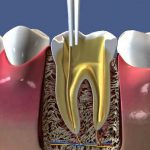Applications of Laser Treatment
Just as laser energy is used in other fields of medicine, it can also be actively used in dentistry. Until recent years, laser energy was primarily used for soft tissue procedures such as gum treatments and teeth whitening. However, with the combination of laser energy and atomized water to create hydrokinetic energy, it has now become applicable for hard tissues such as teeth and bone as well.
To list the areas of application:
-
Cavity preparation and cleaning before filling
-
Root canal treatment
-
Gum disease treatment
-
Aesthetic reshaping of the gum line (especially for patients with excessive gum visibility when smiling)
-
Curettage (deep gum cleaning)
-
Depigmentation (removal of pigmentation from the gums)
-
Removal of soft tissue lesions
-
Treatment of canker sores and cold sores
-
Treatment of tooth sensitivity (sealing of dentin tubules)
-
Teeth whitening
-
Surgical procedures (wisdom teeth, implants, oral and maxillofacial surgeries)
-
Biostimulation (such as reducing or preventing post-surgical pain)
In the treatment methods listed above, recovery time for patients is significantly shorter, and satisfaction rates are much higher compared to conventional methods.
Advantages of Laser Treatment
Since laser treatment in dentistry works without direct contact with other tissues, no heat or vibration is generated. Therefore, patients do not experience pain, and dental procedures can often be performed without the need for anesthesia. This feature makes laser treatment preferable for patients who cannot receive anesthesia, those who are anxious, or those with serious health conditions. In addition, it eliminates post-anesthesia discomforts such as swelling, difficulty eating, and trouble speaking.
The loud sounds produced by conventional dental devices, which often disturb patients, are not present with laser devices. As a result, patients undergo a more comfortable treatment experience.
In surgical procedures performed with lasers, bleeding is minimal or nonexistent. Furthermore, since the treatment is performed with water and involves less trauma than conventional methods, post-operative complications such as swelling and bruising are significantly reduced or prevented.


